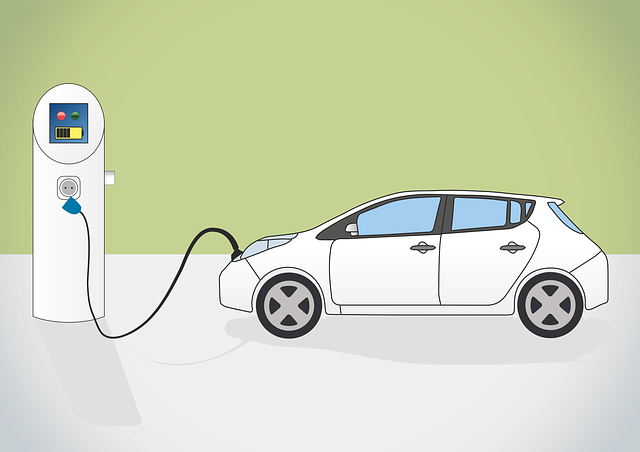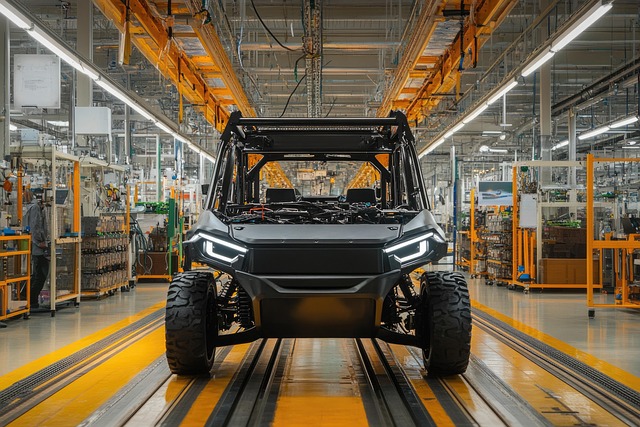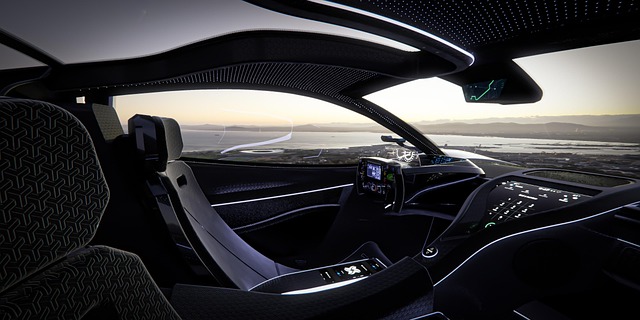The future of transportation is being reshaped by Select Electric Vehicles (SEVs), driven by advancements in battery technology, faster charging times, and consumer incentives. These innovations are making SEVs more efficient, affordable, and appealing for long-distance travel, reducing environmental impact and fostering a greener future. Integrating renewable energy sources for charging infrastructure further enhances sustainability and accessibility. Government policies and ambitious electrification targets accelerate the adoption of SEVs, promoting economic growth while combatting climate change.
The future of transportation is electric. As global efforts to combat climate change intensify, Select Electric Vehicles (EVs) are poised to revolutionize the automotive landscape. This article explores the multifaceted evolution of clean energy cars, driven by technological breakthroughs, government interventions, and shifting consumer preferences. From advancements in battery technology enabling faster charging and extended ranges, to the integration of renewable energy sources for vehicle power, the path forward promises a sustainable and efficient mobility revolution.
- Technological Advancements Shaping the Future of Clean Energy Cars
- – Discussion on battery technology improvements (higher energy density, faster charging)
- – Integration of renewable energy sources like solar and wind power for vehicle charging
- Government Policies and Incentives Driving Adoption
Technological Advancements Shaping the Future of Clean Energy Cars

The future of clean energy cars is being rapidly shaped by technological advancements that promise to transform the way we commute and transport goods. One of the most significant drivers is the evolution of Select Electric Vehicles (SEVs), which are becoming increasingly efficient and affordable. The development of rapid charging electric cars, for instance, addresses a key barrier to widespread adoption by allowing drivers to recharge their vehicles faster than ever before. This advancement is crucial for long-distance travel, where previous range anxieties have hindered the appeal of electric vehicles.
Moreover, innovations in battery technology are playing a pivotal role in enhancing the performance and longevity of SEVs. As a result, these vehicles offer improved driving ranges and reduced downtime, making them more viable alternatives to traditional gasoline-powered cars. In addition, the growing demand for sustainable transportation for long trips and zero-emission delivery vehicles is driving further research into efficient and eco-friendly propulsion systems. These developments collectively point towards a future where clean energy cars are not just an option but the norm, paving the way for greener and more sustainable mobility across various sectors.
– Discussion on battery technology improvements (higher energy density, faster charging)

The future of clean energy cars is heavily reliant on advancements in battery technology. One of the most significant areas of improvement is achieving higher energy density, allowing for longer driving ranges on a single charge. This advancement is crucial for addressing range anxiety, a primary barrier to the widespread adoption of electric vehicles (EVs). As battery manufacturers continue to innovate, we can expect select electric vehicles to offer competitive ranges comparable to their gasoline counterparts, making them more viable for long trips and daily commuting needs.
Additionally, faster charging technologies are revolutionizing the EV landscape. The development of ultra-fast charging stations has significantly reduced charging times, transforming the ownership experience from a lengthy process to a mere convenience. These improvements not only enhance the sustainability of transportation but also increase consumer confidence in transitioning to electric vehicles. Furthermore, the longevity of electric vehicle batteries is improving, addressing another common concern among potential EV buyers, and making these vehicles an even more attractive option with reduced maintenance costs and longer-term savings. The availability of electric vehicle tax credits further incentivizes consumers to make the switch, contributing to a greener future for transportation.
– Integration of renewable energy sources like solar and wind power for vehicle charging

The integration of renewable energy sources like solar and wind power is poised to revolutionize the charging infrastructure for Select Electric Vehicles (SEVs). As the world shifts towards sustainable mobility solutions, harnessing clean energy for vehicle charging becomes increasingly vital. This approach not only reduces carbon emissions but also enhances the overall efficiency of zero-emission transportation choices. By leveraging solar panels on residential rooftops and wind turbines in various locations, we can create a decentralized network that supports SEV ownership.
Such integration promises to make electric cars with advanced driver assistance systems (ADAS) more accessible and convenient. As renewable energy becomes more affordable and efficient, it addresses range anxiety—a common concern among potential EV buyers. With a robust network of renewable-powered charging stations, drivers can rely on reliable and eco-friendly power sources, contributing to a greener future while enjoying the benefits of modern technology.
Government Policies and Incentives Driving Adoption

Government policies and incentives play a pivotal role in accelerating the adoption of clean energy cars, specifically Select Electric Vehicles (SEVs). Many countries are implementing stringent environmental regulations to combat climate change, encouraging the transition to zero-emission delivery vehicles. Tax credits, subsidies, and purchase grants are being offered to consumers who opt for SEVs, making them more affordable and attractive. These policies not only reduce greenhouse gas emissions but also foster innovation in the automotive industry, leading to advancements in battery technology and improved infrastructure for charging sustainable commercial vehicle rentals.
Furthermore, governments are setting ambitious targets for the electrification of transportation, aiming to phase out internal combustion engines over the next few decades. Such initiatives create a favorable environment for SEV manufacturers, spur competition, and drive down costs, making best long range electric cars more accessible to a broader market. This shift towards sustainable mobility is not only beneficial for the environment but also contributes to economic growth and job creation in the clean energy sector.
The future of clean energy cars is bright, driven by rapid technological advancements in battery technology and increasing integration of renewable energy sources. As governments worldwide implement favorable policies and incentives, the adoption of select electric vehicles (SEVs) is poised to accelerate. Continuous improvements in charging infrastructure and higher energy density batteries make SEVs more viable and accessible, ultimately leading to a significant reduction in our carbon footprint and a sustainable transportation future.
